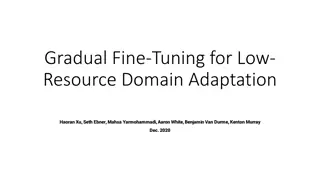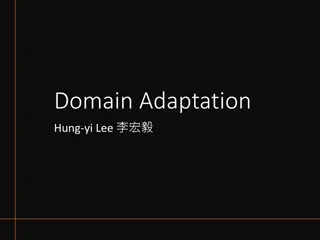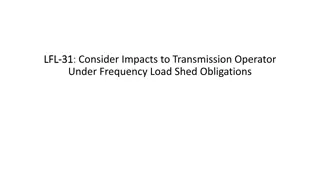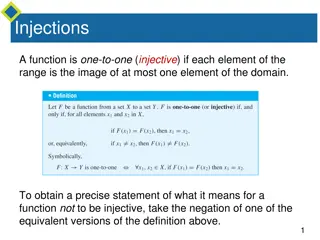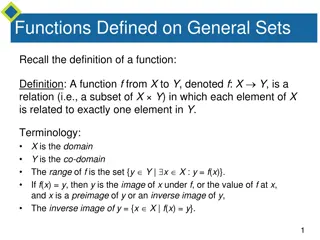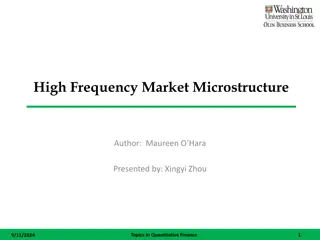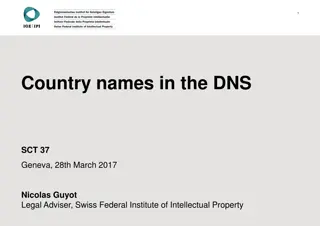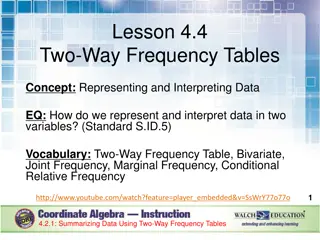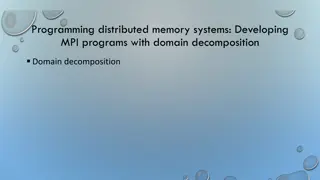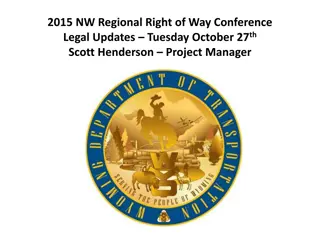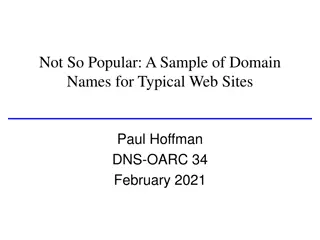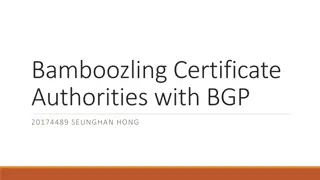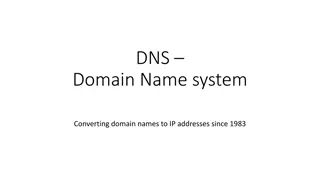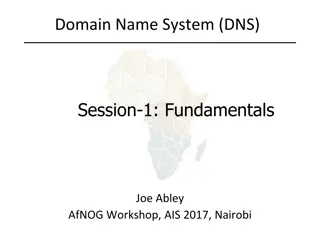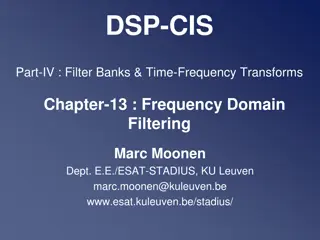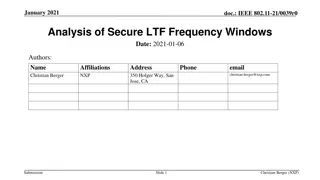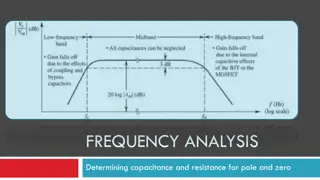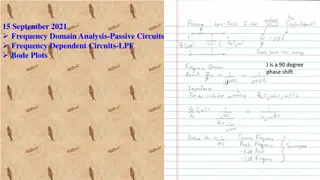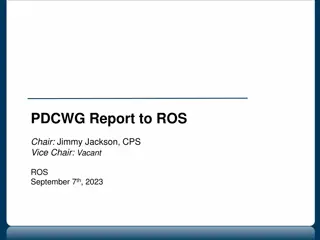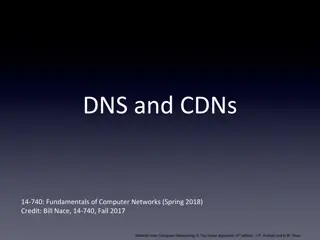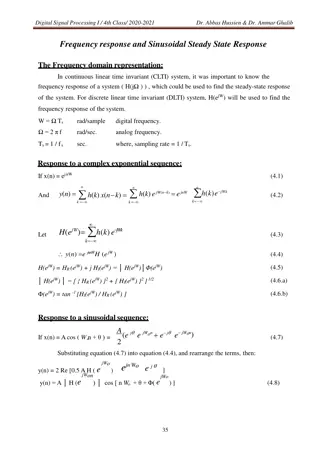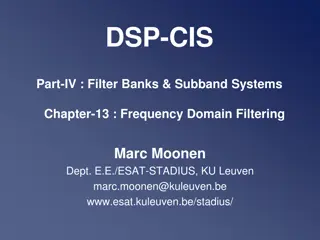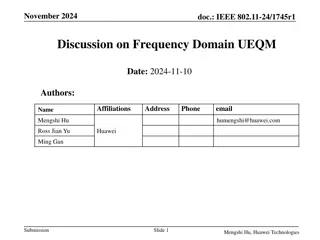Load Frequency Control in Power Systems
Electric power systems require Load Frequency Control (LFC) to maintain a uniform frequency, distribute load among generators, and manage tie-line interchange schedules. LFC detects frequency changes, generates real power commands to adjust torque, and ensures stability within specified limits. Reas
9 views • 38 slides
Gradual Fine-Tuning for Low-Resource Domain Adaptation: Methods and Experiments
This study presents the effectiveness of gradual fine-tuning in low-resource domain adaptation, highlighting the benefits of gradually easing a model towards the target domain rather than abrupt shifts. Inspired by curriculum learning, the approach involves training the model on a mix of out-of-doma
0 views • 17 slides
Domain Adaptation in Machine Learning
Domain adaptation in machine learning involves transferring knowledge from one domain to another. It addresses the challenge of different data distributions in training and testing sets, leading to improved model performance. Techniques like domain adversarial training and transfer learning play a k
0 views • 16 slides
Transmission Operator Obligations in Under-Frequency Load Shedding
ERCOT Compliance ensures that Transmission System Operators (TSOs) and Distribution System Operators (DSOs) have automatic under-frequency load shedding circuits in place to provide load relief during under-frequency events. The TSOs are required to shed a specific percentage of their connected load
2 views • 6 slides
Injective and Surjective Functions
Injective functions map elements from the domain to the range uniquely, while surjective functions ensure every element in the co-domain has a corresponding element in the domain. The negation of injective means finding x1 and x2 in the domain with the same function value but not equal, whereas for
2 views • 26 slides
Functions: Definitions and Arrow Diagrams
Recall the definition of a function, where each element in the domain is related to exactly one element in the co-domain. Arrow diagrams can visually represent functions from finite sets X to Y. In this example, a function is defined from X = {a, b, c} to Y = {1, 2, 3, 4} using arrow diagrams, showc
10 views • 28 slides
High Frequency Market Microstructure - A Comprehensive Overview
Delve into the intricate world of high-frequency market microstructure with a detailed exploration of how traders operate, market structures, regulatory influences, and the evolution of trading platforms. Uncover the birth of High-Frequency Trading (HFT), the strategies employed by high-frequency tr
1 views • 12 slides
Country Names in the Domain Name System (DNS)
The Domain Name System (DNS) plays a crucial role in attributing top-level and second-level domains to country names. This system is global and managed by ICANN, not national offices, allowing for unique attribution to one person. Examples of country names registered as second-level domains are prov
2 views • 7 slides
Two-Way Frequency Tables in Data Analysis
Explore the concept of representing and interpreting data in two variables using two-way frequency tables. Learn about joint frequency, marginal frequency, and conditional relative frequency through a practical example involving gender and nail services. Discover how to target specific audiences bas
1 views • 15 slides
Hierarchical Attention Transfer Network for Cross-domain Sentiment Classification
A study conducted by Zheng Li, Ying Wei, Yu Zhang, and Qiang Yang from the Hong Kong University of Science and Technology on utilizing a Hierarchical Attention Transfer Network for Cross-domain Sentiment Classification. The research focuses on sentiment classification testing data of books, training
0 views • 28 slides
Developing MPI Programs with Domain Decomposition
Domain decomposition is a parallelization method used for developing MPI programs by partitioning the domain into portions and assigning them to different processes. Three common ways of partitioning are block, cyclic, and block-cyclic, each with its own communication requirements. Considerations fo
1 views • 19 slides
Cross-Domain Policies in Web Application Security
This content explores various aspects of cross-domain policies in web applications, including the Same-Origin Policy for JavaScript and Flash, their importance in protecting user data, potential risks of bypassing these policies, and the implications of trusting Flash content to read data from exter
1 views • 64 slides
Wyoming Eminent Domain Laws - Legal Updates and Negotiations
Wyoming Legislative Changes to Eminent Domain Laws outline the requirements for exercising eminent domain, including proof of public interest and necessity, diligent negotiations, and proper notification to property owners. The laws also emphasize the importance of good faith negotiations and fair c
0 views • 9 slides
Domain Names for Authoritative DNS Servers
Researchers need to accurately define the types of authoritative DNS servers they sample when measuring server properties. This study focuses on collecting domain names used for web servers to assess typical domain name characteristics, highlighting the importance of accurate data for research purpo
0 views • 7 slides
Securing Domain Control with BGP Attacks and Digital Certificates
Exploring the vulnerabilities of domain control verification in the context of BGP attacks and the role of digital certificates in ensuring security. The process of domain control verification, issuance of digital certificates by Certificate Authorities (CAs), and the significance of Public Key Infr
0 views • 53 slides
Evolution of Domain Name System (DNS) Since 1983
Domain Name System (DNS) has played a crucial role in converting domain names to IP addresses since its inception in 1983. This system has revolutionized the way we navigate the internet, translating human-readable names into machine-readable IP addresses. The distributed and hierarchical nature of
0 views • 23 slides
Domain Name System (DNS) Fundamentals
The Domain Name System (DNS) is a crucial component of the Internet, facilitating the conversion of human-readable domain names into IP addresses. This session covers the basics of DNS, the need for names in computing, challenges of the old HOSTS.TXT system, the distributed nature of DNS, its hierar
0 views • 29 slides
ITU Regulations and Frequency Coordination for Digital Sound Broadcasting
The International Telecommunication Union (ITU) plays a crucial role in regulating digital sound broadcasting through its Radio Regulations (RR) and Frequency Coordination processes. The ITU establishes legal frameworks, including the ITU Constitution and Convention, to govern the use of spectrum an
0 views • 12 slides
Angle Modulation: Frequency and Phase Variations
Angle modulation involves varying the frequency or phase of a carrier signal based on the modulating signal. Frequency Modulation (FM) and Phase Modulation (PM) are types of angle modulation that offer better noise discrimination. This results in improved robustness against interference but comes at
0 views • 23 slides
Applications of Spectrum Analyzer in Amateur Radio
The spectrum analyzer is a crucial tool in amateur radio for analyzing signals in both time and frequency domains. It enables representation of various signals like audio, ultrasonic, and RF. By utilizing techniques such as the Fourier transform, signals can be converted from time to frequency domai
0 views • 24 slides
Frequency Finder 4 Test Frequency
This document provides a detailed overview of the Test Frequency Workshops conducted in Egypt and Thailand in October 2016. It outlines the process of testing single frequencies, presenting summary calculation results, viewing co-frequency details, and assessing compatibility between frequency assig
0 views • 12 slides
ACAO/ICAO Frequency Management Workshop Summary
Summary of discussions, history, and agenda of the successful ACAO/ICAO Frequency Management Workshop held in Casablanca, Morocco. The workshop covered topics like aeronautical frequency planning, using frequency finder tools, updating state frequencies, and addressing spectrum issues. Participants
0 views • 12 slides
Frequency Domain FIR Filter Realization and Eigenvalue Decomposition
FIR filter realization in the frequency domain involves constructing LTI systems using delay elements, adders, and multipliers. The eigenvalue decomposition of circulant matrices and the relationship with DFT matrices are key concepts discussed in the context of filter banks and time-frequency trans
0 views • 26 slides
IAB-MT Frequency Error Requirement Discussion
Background information and discussions on defining absolute or relative frequency error requirements for IAB-MT in relation to parent throughput, implementation impact, and test configurations. Various viewpoints and concerns were raised regarding the impact on parent IAB node throughput, synchroniz
0 views • 7 slides
Analysis of Secure LTF Frequency Windows in IEEE 802.11-21/0039r0
This document discusses security analysis focusing on Secure LTF Frequency Windows in the context of IEEE 802.11-21/0039r0 standards. It covers attack scenarios like PHY security, integrity attacks, and frequency/domain computational attacks. The content delves into how attackers manipulate measurem
0 views • 25 slides
Capacitance and Resistance Analysis for Frequency Response in Amplifiers
Explore the frequency response of amplifiers through capacitance and resistance analysis for poles and zeros. Learn how to determine capacitance, resistance, gain characteristics, and frequency roll-off in different frequency bands. Understand the impact of coupling and bypass capacitors on the low-
0 views • 25 slides
Understanding Transmission Lines in Frequency Domain for Communication Systems
Explore the importance of the frequency domain in communication systems, how solutions are derived using Fourier transform methods, and the significance of phasor domain analysis in solving for time-varying signals on transmission lines. Learn about Telegrapher's equations and the transfer function
0 views • 44 slides
Understanding Frequency Histograms for Data Analysis
Discover the power of frequency histograms for organizing and visualizing data sets. Learn how to create frequency distributions, interpret histograms, and differentiate between frequency and relative frequency histograms. Explore the significance of cumulative frequency histograms in analyzing data
0 views • 14 slides
Discussion on Frequency Domain UEQM in IEEE 802.11-24/1745r0
Explore the promising feature of Unequal Modulation (UEQM) in the frequency domain as discussed in the IEEE document IEEE 802.11-24/1745r0. The article delves into the benefits of applying different modulations to various subcarriers, simulation configurations, and the impact of interference on subc
0 views • 11 slides
Frequency Domain Analysis and System Stability Determination
Explore the significance of frequency-domain analysis and stability determination in control systems. Understand the benefits of measuring system performance in the frequency domain, including sensitivity to noise and parameter variations. Learn about frequency-response studies, sinusoidal steady-st
0 views • 35 slides
Frequency Domain Analysis of LPF Circuits - Understanding Bode Plots
Explore the concept of Frequency Domain Analysis in Passive Circuits, focusing on Frequency Dependent Circuits like Low Pass Filters (LPF) and the significance of Bode Plots with a 90-degree phase shift.
0 views • 5 slides
Frequency Control Report Overview for ROS Meeting
Explore the detailed report overview presented at the ROS meeting on September 7th, 2023. The report covers various topics such as Frequency Measurable Events, IMFR Performance, CPS1 Performance, RMS1 Performance, and more, providing valuable insights into the management of frequency control within
0 views • 19 slides
Wireless Communication Frequencies and Regulations Overview
Explore the various frequency bands used in mobile communication systems, from Very Low Frequency (VLF) to Extra High Frequency (EHF), along with examples of frequency allocations in regions like Europe, USA, and Japan. Understand the impact of frequency ranges on mobile communication technologies a
0 views • 53 slides
Understanding Domain Name System (DNS) and Content Delivery Networks (CDNs)
Explore the fundamentals of DNS and CDNs in computer networks, covering topics such as domain organization, address conversion protocols, the importance of domain names, and the process of translating domain names to IP addresses. Discover the challenges and complexities involved in navigating, cach
1 views • 59 slides
Frequency Response and Sinusoidal Steady-State Response in Digital Signal Processing
Learn about frequency response and sinusoidal steady-state response in digital signal processing, including the frequency domain representation, response to complex exponential and sinusoidal sequences, and example problems on system frequency response and steady-state response to input signals.
0 views • 4 slides
Interpreting Data with Two-Way Frequency Tables
Learn how to represent and interpret data using two-way frequency tables, joint frequency, marginal frequency, and conditional relative frequency. Discover the importance of capturing survey information in bivariate tables. Dive into examples and understand the significance of joint and marginal fre
0 views • 17 slides
Solving Problems in Classic Blocks World Domain
Explore the Classic Blocks World domain starting with BW domain file, solving problems using planning domains, and extending the domain with predicates and constants. Learn about basic add and delete effects in actions, defining predicates and actions, and executing pick-up, put-down, stack, and uns
0 views • 11 slides
ROS Chair Report Overview and Frequency Analysis Feb 4, 2016
Explore the PDCWG report to the ROS Chair Percy Galliguez and Vice Chair Stewart Rake covering meeting minutes, performance analysis, regulation, frequency control, and more from January 2016. Delve into Frequency Measurable Events, Interconnection Minimum Frequency Response, CPS1 and RMS1 performan
44 views • 15 slides
Frequency Domain FIR Filter Realization and Time-Frequency Analysis
Explore the concepts of Frequency Domain FIR Filter Realization and Time-Frequency Analysis in digital signal processing. Learn about circulant matrices, eigenvalue decomposition, and block processing techniques for efficient signal processing implementations.
0 views • 26 slides
Discussion on Frequency Domain UEQM in IEEE 802.11-24/1745r1 Document
Explore the discussion on Frequency Domain UEQM in the IEEE 802.11-24/1745r1 document, focusing on unequally applying modulations to subcarriers for enhanced performance in wireless communications. The document delves into simulation results, benefits, configuration setups, and interference consider
0 views • 10 slides

